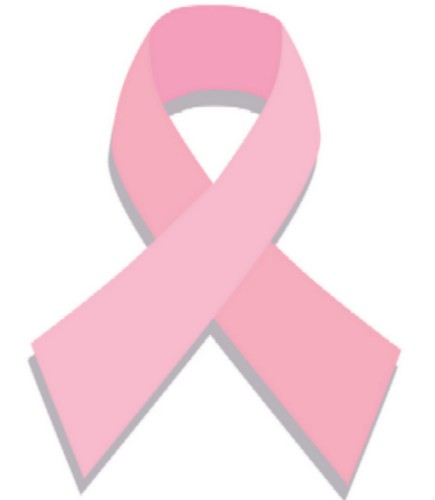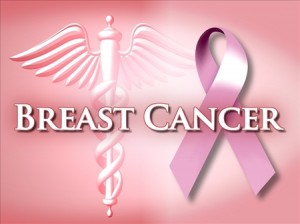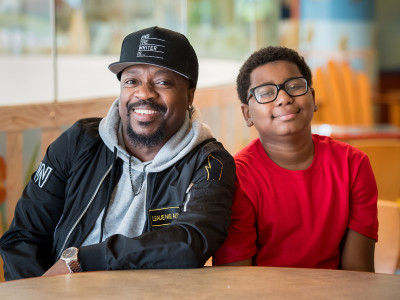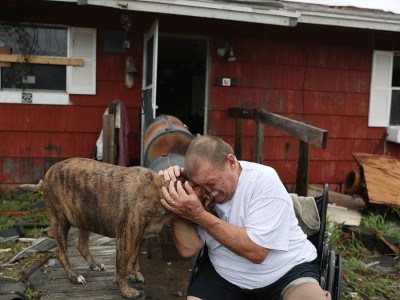Breast cancer is a cancer that starts in the tissues of the breast. There are two main types of breast cancer:
- Ductal carcinoma starts in the tubes (ducts) that move milk from the breast to the nipple. Most breast cancers are of this type.
- Lobular carcinoma starts in the parts of the breast, called lobules, that produce milk.
In rare cases, breast cancer can start in other areas of the breast.
Some women have what’s called HER2-positive breast cancer. HER2 refers to a gene that helps cells grow, divide, and repair themselves. When cells (including cancer cells) have too many copies of this gene, they grow faster. Experts think that women with HER2-positive breast cancer have a more aggressive disease and a higher risk that the disease will return (recur) than women who do not have this type.
Causes, Incidence and Risk Factors:
Over the course of a lifetime, 1 in 8 women will be diagnosed with breast cancer.
Risk factors you cannot change include:
- Age and gender — Your risk of developing breast cancer increases as you get older. Most advanced breast cancer cases are found in women over age 50. Women are 100 times more likely to get breast cancer than men.
- Family history of breast cancer — You may also have a higher risk for breast cancer if you have a close relative who has had breast, uterine, ovarian, or colon cancer. About 20 – 30% of women with breast cancer have a family history of the disease.
- Genes — Some people have genes that make them more likely to develop breast cancer. The most common gene defects are found in the BRCA1 and BRCA2 genes. These genes normally produce proteins that protect you from cancer. If a parent passes you a defective gene, you have an increased risk for breast cancer. Women with one of these defects have up to an 80% chance of getting breast cancer sometime during their life.
- Menstrual cycle — Women who got their periods early (before age 12) or went through menopause late (after age 55) have an increased risk for breast cancer.
Other risk factors include:
- Alcohol use — Drinking more than 1 – 2 glasses of alcohol a day may increase your risk for breast cancer.
- Childbirth — Women who have never had children or who had them only after age 30 have an increased risk for breast cancer. Being pregnant more than once or becoming pregnant at an early age reduces your risk of breast cancer.
- DES — Women who took diethylstilbestrol (DES) to prevent miscarriage may have an increased risk of breast cancer after age 40. This drug was given to the women in the 1940s – 1960s.
- Hormone replacement therapy (HRT) — You have a higher risk for breast cancer if you have received hormone replacement therapy with estrogen for several years or more.Obesity — Obesity has been linked to breast cancer, although this link is controversial. The theory is that obese women produce more estrogen, which can fuel the development of breast cancer.
- Radiation — If you received radiation therapy as a child or young adult to treat cancer of the chest area, you have a much higher risk for developing breast cancer. The younger you started such radiation and the higher the dose, the higher your risk — especially if the radiation was given during breast development.
Breast implants, using antiperspirants, and wearing underwire bras do not raise your risk for breast cancer. There is no evidence of a direct link between breast cancer and pesticides.
The National Cancer Institute provides an online tool to help you figure out your risk of breast cancer. See: www.cancer.gov/bcrisktool
Symptoms
Early breast cancer usually does not cause symptoms. This is why regular breast exams are important. As the cancer grows, symptoms may include:
- Breast lump or lump in the armpit that is hard, has uneven edges, and usually does not hurt
- Change in the size, shape, or feel of the breast or nipple — for example, you may have redness, dimpling, or puckering that looks like the skin of an orange
- Fluid coming from the nipple — may be bloody, clear to yellow, green, and look like pus
Men can get breast cancer, too. Symptoms include breast lump and breast pain and tenderness.
Symptoms of advanced breast cancer may include:
- Bone pain
- Breast pain or discomfort
- Skin ulcers
- Swelling of one arm (next to the breast with cancer)
- Weight loss
Signs and tests
The doctor will ask you about your symptoms and risk factors. Then the doctor will perform a physical exam, which includes both breasts, armpits, and the neck and chest area.
Tests used to diagnose and monitor patients with breast cancer may include:
- Breast MRI to help better identify the breast lump or evaluate an abnormal change on a mammogram
- Breast ultrasound to show whether the lump is solid or fluid-filled
- Breast biopsy, using methods such as needle aspiration, ultrasound-guided, stereotactic, or open
- CT scan to see if the cancer has spread
- Mammography to screen for breast cancer or help identify the breast lump
- PET scan
- Sentinal lymph node biopsy to see if the cancer has spread
If your doctor learns that you do have breast cancer, more tests will be done to see if the cancer has spread. This is called staging. Staging helps guide future treatment and follow-up and gives you some idea of what to expect in the future.
Breast cancer stages range from 0 to IV. The higher the staging number, the more advanced the cancer.
Treatment
Treatment is based on many factors, including:
- Type and stage of the cancer
- Whether the cancer is sensitive to certain hormones
- Whether the cancer overproduces (overexpresses) a gene called HER2/neu
In general, cancer treatments may include:
- Chemotherapy medicines to kill cancer cells
- Radiation therapy to destroy cancerous tissue
- Surgery to remove cancerous tissue — a lumpectomy removes the breast lump; mastectomy removes all or part of the breast and possible nearby structures
Hormonal therapy is prescribed to women with ER-positive breast cancer to block certain hormones that fuel cancer growth.
- An example of hormonal therapy is the drug tamoxifen. This drug blocks the effects of estrogen, which can help breast cancer cells survive and grow. Most women with estrogen-sensitive breast cancer benefit from this drug.
- Another class of hormonal therapy medicines called aromatase inhibitors, such as exemestane (Aromasin), have been shown to work just as well or even better than tamoxifen in postmenopausal women with breast cancer. Aromatase inhibitors block estrogen from being made.
Targeted therapy, also called biologic therapy, is a newer type of cancer treatment. This therapy uses special anticancer drugs that target certain changes in a cell that can lead to cancer. One such drug is trastuzumab (Herceptin). It may be used for women with HER2-positive breast cancer.
Cancer treatment may be local or systemic.
- Local treatments involve only the area of disease. Radiation and surgery are forms of local treatment.
- Systemic treatments affect the entire body. Chemotherapy is a type of systemic treatment.
Most women receive a combination of treatments. For women with stage I, II, or III breast cancer, the main goal is to treat the cancer and prevent it from returning (curing). For women with stage IV cancer, the goal is to improve symptoms and help them live longer. In most cases, stage IV breast cancer cannot be cured.
- Stage 0 and DCIS — Lumpectomy plus radiation or mastectomy is the standard treatment. There is some controversy on how best to treat DCIS.
- Stage I and II — Lumpectomy plus radiation or mastectomy with some sort of lymph node removal is the standard treatment. Hormone therapy, chemotherapy, and biologic therapy may also be recommended following surgery.
- Stage III — Treatment involves surgery, possibly followed by chemotherapy, hormone therapy, and biologic therapy.
- Stage IV — Treatment may involve surgery, radiation, chemotherapy, hormonal therapy, or a combination of these treatments.
Women who have had a mastectomy may have reconstructive breast surgery, either at the same time as the mastectomy or later.
Here are a few organizations you can get involved with to support Breast Cancer!
National Breast Cancer Foundation
Y-Me National Breast Cancer Foundation
Source: BreastCancer.org and Pub Med Health






